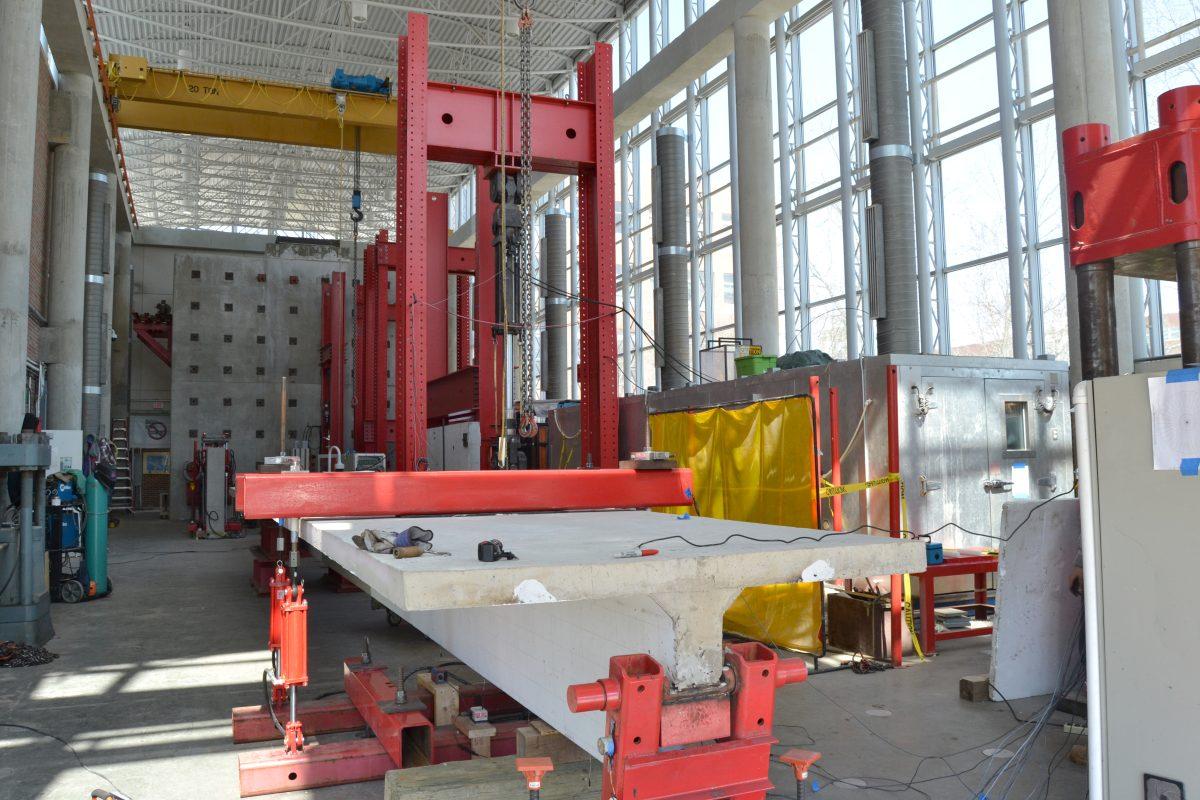The N.C. State Constructed Facilities Lab recently received an eco-friendly lighting upgrade that replaced inefficient interior lighting systems in several research areas, stairwells, conference rooms and offices with highly efficient LED technology.
“Replacing traditional lighting systems with LED technology provides financial benefits in the form of lower utility bills and maintenance costs,” said Energy Management program coordinator Claudia Powell in a press release from Sustainability at N.C. State. “LED technology is particularly favorable when replacing energy intensive bulbs or those in hard to reach or heavily utilized spaces.”
Jerry Atkinson, a building technician, said lights used in the office now draw less than one amp ofpower per fixture in comparison to the more than 100 amps the old fixtures drew.
“The office areas are now able to light the space using 50-person power, or half of what is available,” Atkinson said “The high bay area lights are extremely difficult to access and took some time to warm up and come on. We now have instantaneous lighting and a much longer lasting product.”
The LED technology will ultimately reduce the cost of lighting the lab because LED lights don’t have to be replaced nearly as often as the lights that were previously in place, and the lab’s high ceilings require renting mechanical lifts to reach bulbs in need of replacement, the press release stated.
Motion-sensor lighting will now also be featured in the building’s stairwells, and individual office sand conference rooms now have customizable lighting levels to save power. After a period when no movement has been detected, the new lights in the building will automatically dim to avoid unnecessary power consumption.
Atkinson said he encourages all of the lab’s users to use less power whenever possible.
“I personally promote energy conservation in the lab with all of the building occupants by encouraging turning off and shutting down all electrical equipment at the end of each day,” Atkinson said.
The lights were purchased through an energy conservation fund managed by N.C. State’s Energy Management, a unit designed to manage University energy resources in a cost-effective and efficient manner, according to the unit’s mission statement.
N.C. State’s Energy Management aims to reduce building energy consumption by 30 percent by 2015.
The Constructed Facilities Lab is used for civil engineering, full-scale testing of structural-based components and industrial service testing for companies involved in the construction and building industries, according to Atkinson.
Atkinson said the facilities zone shop recommended the building to receive the upgrade.
Installing LEDs in the Constructed Facilities Lab is helping the University decrease its ecological footprint, and there are more plans for more LED installations around campus set to get rolling in the next fiscal year. Some of the plans include adding new LED chandelier lights at the Park Alumni Center and replacing old lighting with LEDs in Nelson Hall stairwells, where expected annual savings are estimated to reach $1,700, the press release said.








